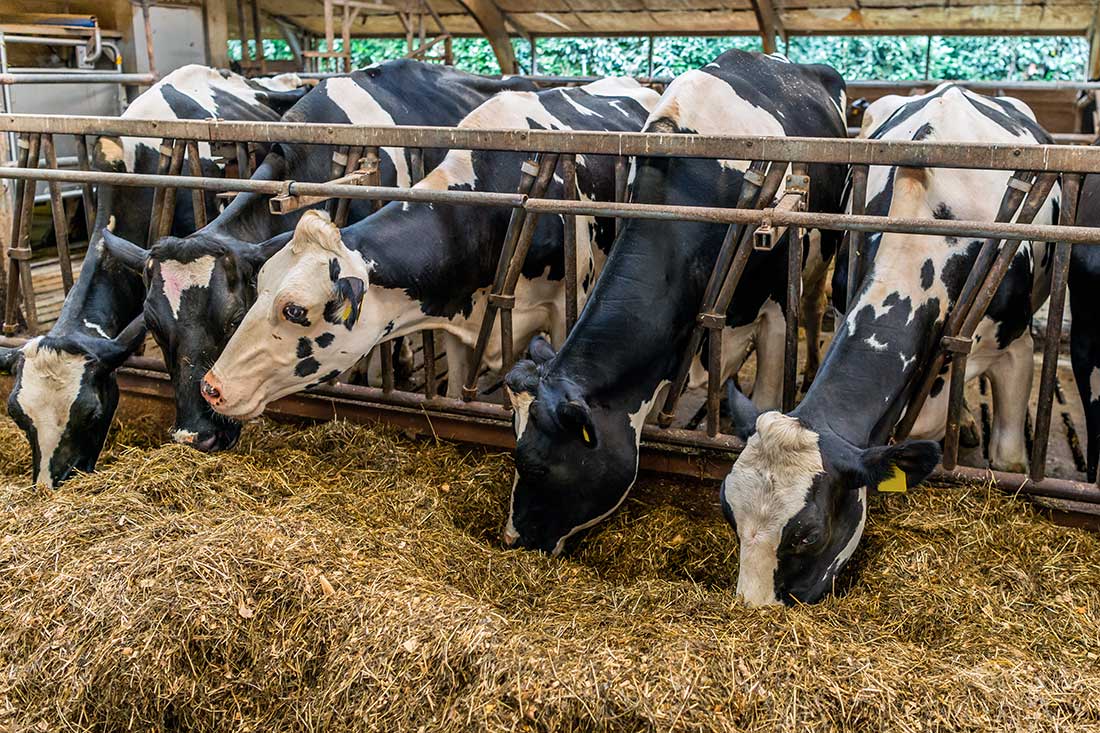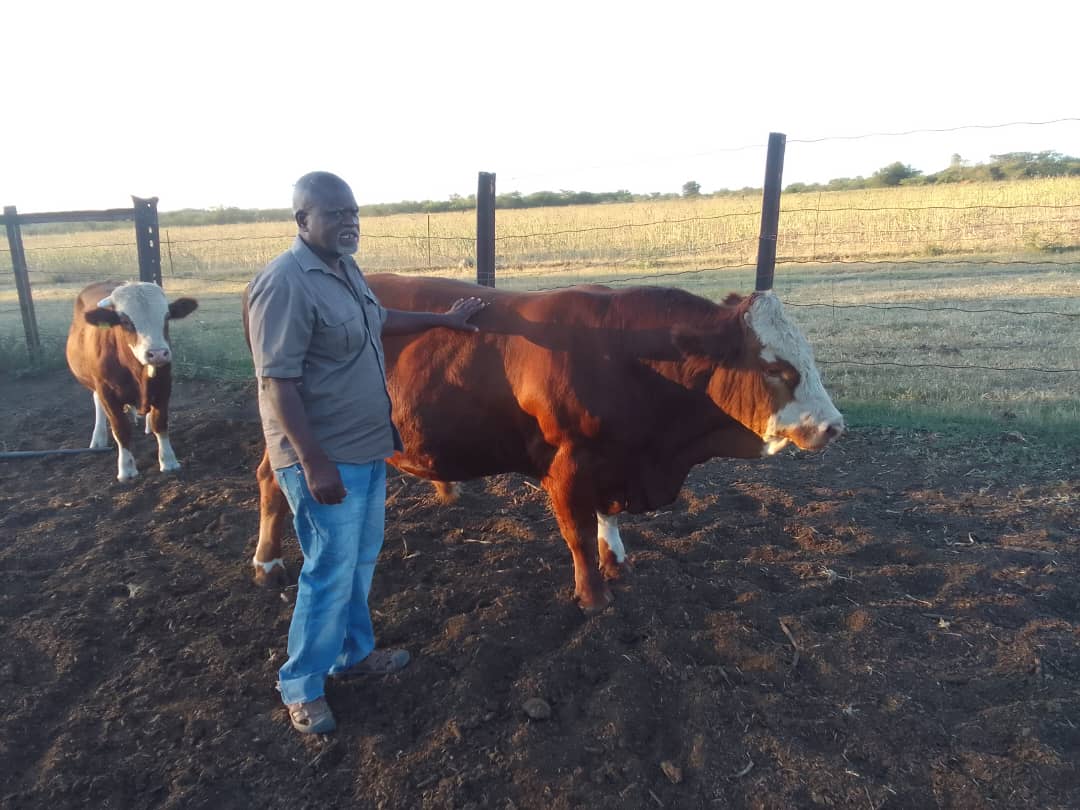The importance of phosphorus during the rains 

The Importance of Phosphorus Supplementation during the Rainy Season in Cattle Farming
Phosphorus deficiency is a reversible nutritional challenge in cattle farming that requires Phosphorus supplementation. As an important mineral that serves the function of facilitating optimal performance, it is salient to ensure that cattle are sufficiently provided with Phosphorus, P.
The Importance of Phosphorus in Cattle Farming
It is reported that Phosphorus makes up about 1%, and is the second most abundant mineral in animals1. The mineral is an integral component of cattle diet for the following reasons;
- Phosphorus enables energy transfer: Energy transfer is the extraction of energy from feed through metabolism. The purpose is to facilitate system functionality and the performance of life-sustaining processes in an animal. Phosphorus in livestock feed facilitates this process and ensures that a cattle’s system has sufficient energy levels for processes such as respiration, digestion, reproduction and production of by-products such as milk. Other functionalities include optimal kidney functioning, nerve signaling, muscle contraction2 etcetera.
- P enables the formation of bones and teeth: Phosphorus, Calcium and Magnesium are the main macronutrients that aid the formation of an animal’s skeletal structure which includes the formation of teeth and bones. In situations of low levels of these macronutrients, the animal’s skeletal structure becomes weak with weak bones and teeth. P is so important to this process that 80% of a ruminants Phosphorus level is contained in their teeth and bones. The other 20% is utilized the body for other purposes.
- Increased feed intake and break-down of other feed nutrient classes such as fat, protein and carbohydrate, minerals and vitamins1. Trials by Meat and Livestock Australia (MLA) have revealed that by increasing feed intake in cattle, Phosphorus has the ability to increase animal live weight by over 100kg as well as decrease mortality rate by an average of about 32.5%.
- Buffering pH levels: P aids cattle to maintain balanced levels of acidity and alkalinity in the rumen. This helps with digestion of nutrients and maintenance of a strong immune system.
Other minerals required to perform optimally include Calcium, Cobalt, Potassium, Magnesium and Iodine. But of them all, Phosphorus is one of the most quickly utilized in cattle due to the production of phytate by ruminants4. This implies that the nutrient is required by cattle in large quantities. In some instances, livestock farmers provide excess quantities in livestock feed to meet up with the high consumption rate and to reduce the possibility of Phosphorus deficiency. The excess when excreted can be recycled in the form of fertilizer that provides P to the soil and support plant growth while the plants can be consumed by livestock as a source of the mineral, and the cycle continues.
Sources of Phosphorus
Essentially, Phosphorus fed to cattle is sourced from plant sources. However, feeds produced from plants cultivated on soils with low Phosphorus levels usually turn out to be low in Phosphorus content. Other sources of P include bone, blood and meat meal, shrimp and fish meal, dried poultry manure, rock phosphate and dicalcium phosphate. Examples of plant sources include rice and wheat bran, sesame seed, cotton seed, rice polishing, sunflower seed, rapeseed etc.
Evidence of Phosphorus deficiency
Hypophosphatemia or Phosphorus deficiency which refers to low levels of Phosphorus in an animal mostly occurs due to inadequate intake of the nutrient over an extended period. It also occurs when there is an imbalance between the levels of Phosphorus and Calcium in the body. As more units of Phosphorus are consumed, there is the need to also consume some calcium in order to create a balance. Some evidences of nutrient’s deficiency in cattle include;
- Aberrations in the animal’s skeletal structure such as weakness and softness (osteomalacia) of the bones, fractures, stiff joints, lameness, distorted bone structure, cracking sounds from bones during movement etc.;
- Botulism which causes cattle to eat bones to satisfy cravings for Phosphorus
- Loss of appetite;
- Increase mortality as result of not feeding well;
- Retarded growth and
- Sterility.
Phosphorus Supplementation during Rainy Season
In order to prevent any of the aforementioned evidences, Phosphorus supplementation is required. It is the provision of sufficient amounts of Phosphorus in a cattle’s feed as a measure to avoid or reverse Phosphorus deficiency. It simply involves providing cattle with feed that have high and adequate Phosphorus content. Phosphorus supplementation can also be achieved by feeding cattle with mineral supplements that are rich in Phosphorus5.
The most effective approach and period for Phosphorus supplementation is during the rainy seasons6. During this period, pastures are fresh, rapidly growing and provide higher levels of energy and protein which subsequently lead to better functioning systems in terms of growth and production. In other words, rainy season pasture have higher potentials to facilitate optimal performance in cattle. Therefore, considering that Phosphorus facilitates increased appetite and feed intake in animals, it is cost effective to supplement cattle feed with the nutrient during the rainy season. This enables them to feed more on healthier pasture which improves system functionality and prevents the risk of Phosphorus deficiency. Research proves that Phosphorus supplementation in wet season provides an average of about six (6) times return on money expended on supplement procurement6. It is a highly worthwhile strategy that increases the productivity of animal’s significantly7. This is as against the dry seasons when pastures are slow growing and do not provide as much energy and protein levels. At that time, the response rate to Phosphorus supplementation is slower.
Another method of Phosphorus supplementation outside feeding cattle with rainy season pasture is the administration of phosphate salts. This involves administering animals with either mono or sodium diphosphate. It is a cheap, sustainable and safe measure. Fertilization of soils with Phosphorus fertilizers also ensures that animal’s feed on plants with adequate amounts of Phosphorus absorbed from the soil.
References
- Why do Cattle need Phosphorus? A Guide for Northern Beef Producers published by Meat and Livestock Australia (MLA). Retrieved from https://bit.ly/3gu6t3R
- Jubb TF, Annand TE, Main DC, Murphy GM. (1993): Phosphorus Supplements and Fluorosis in Cattle: A Northern Australian Experience. Aust Vet J. 1993 Oct; 70(10):379-83. doi: 10.1111/j.1751-0813.1993.tb00818.x. PMID: 8257317. Retrieved from https://pubmed.ncbi.nlm.nih.gov/8257317/.
- MedlinePlus (2022): Phosphorus Diet. An online blog post retrieved from https://my.writingjobz.com/login
- Satter, Larry D.; Klopfenstein, Terry J.; Erickson, Galen E.; and Powell, J. Mark, “Phosphorus and Dairy/Beef Nutrition” (2005). Faculty Papers and Publications in Animal Science. 549. https://digitalcommons.unl.edu/animalscifacpub/549.
- MSD Manual (2020): Hypophosphatemia in Animals. Online blog post retrieved from https://www.msdvetmanual.com/metabolic-disorders/disorders-of-Phosphorus-metabolism/hypophosphatemia-in-animals.
- Stock Lick Trading: Wet Season Phosphorus Supplementation. Retrieved from http://www.stocklicktrading.com.au/wp-content/uploads/2015/09/Wet-Season-Phosphorus.pdf.
- Evaluation of wet season Phosphorus supplementation to improve production and greenhouse gas emissions in northern Australia. A joint publication by the Australian Government, MLA, CSIRO, Northern Territory Government and Queensland Government retrieved from https://futurebeef.com.au/wp-content/uploads/Phosphorous-factsheet_web.pdf.



